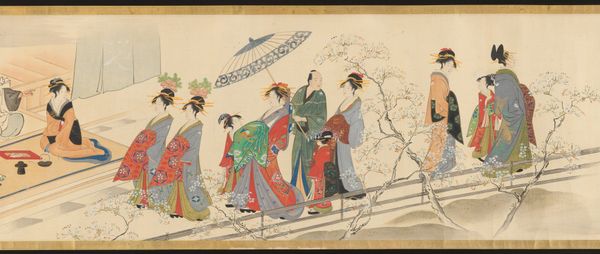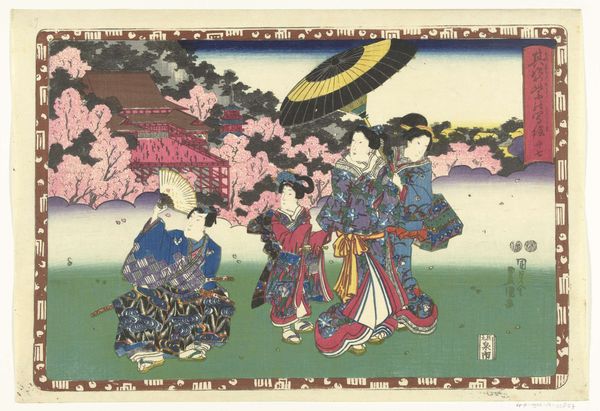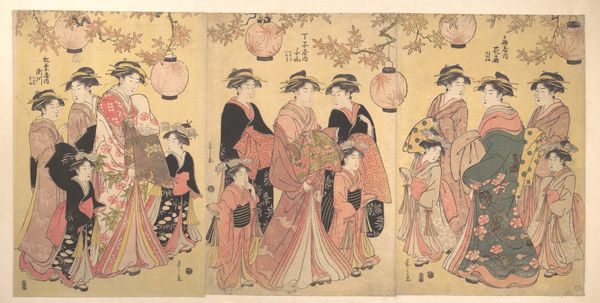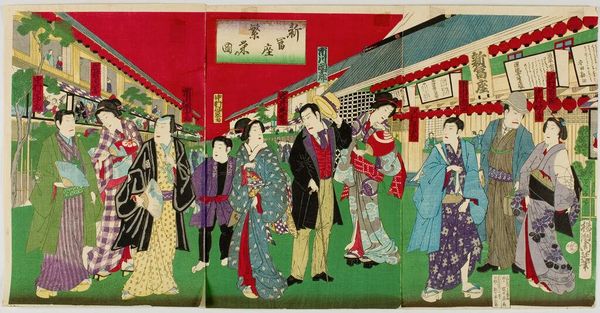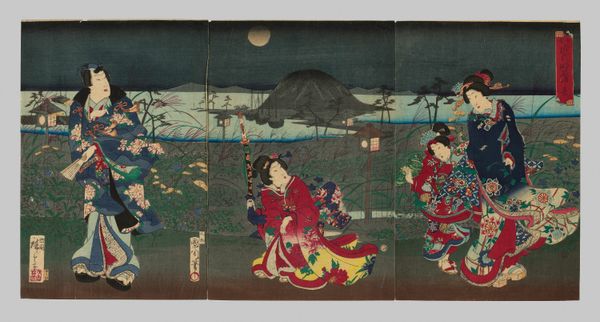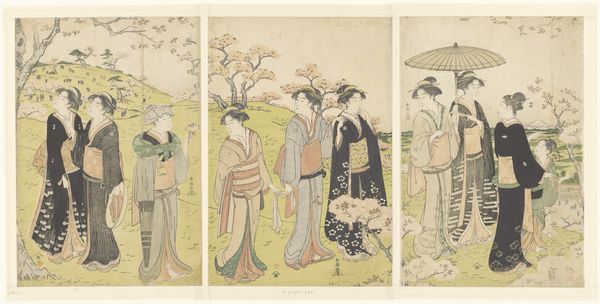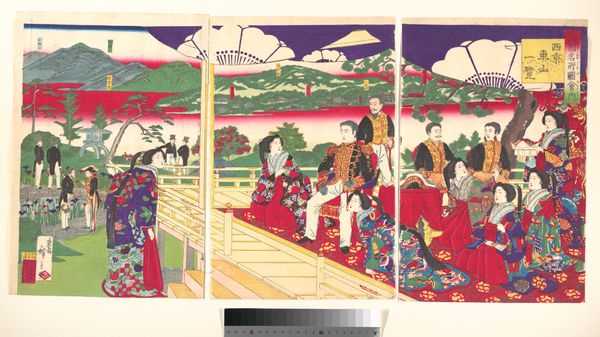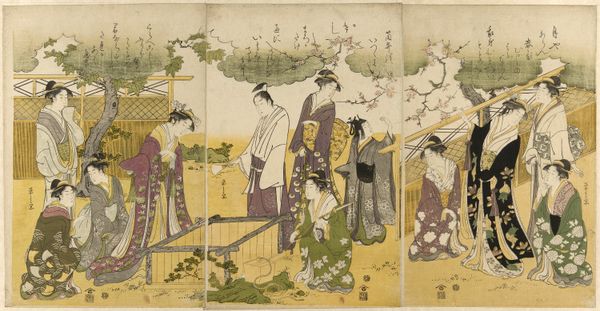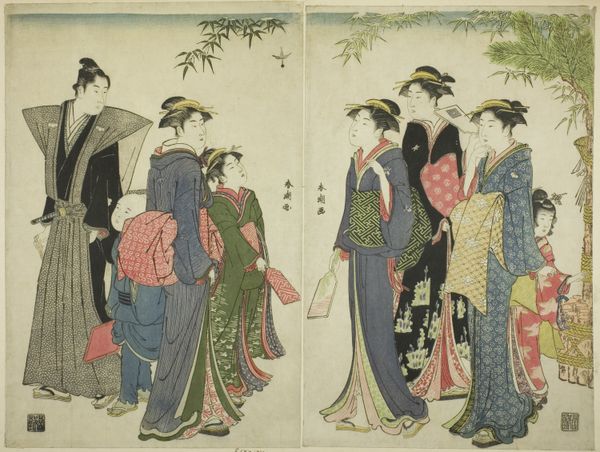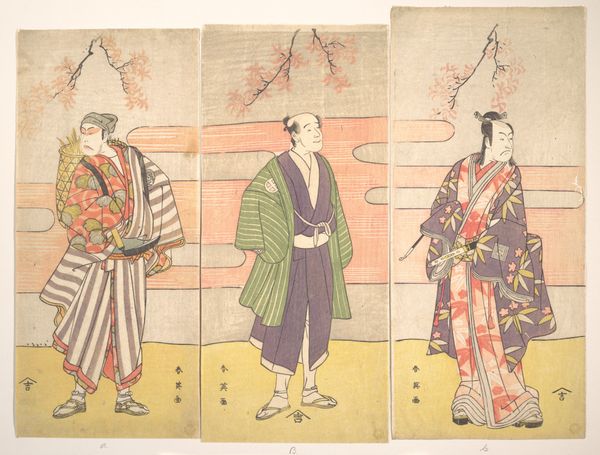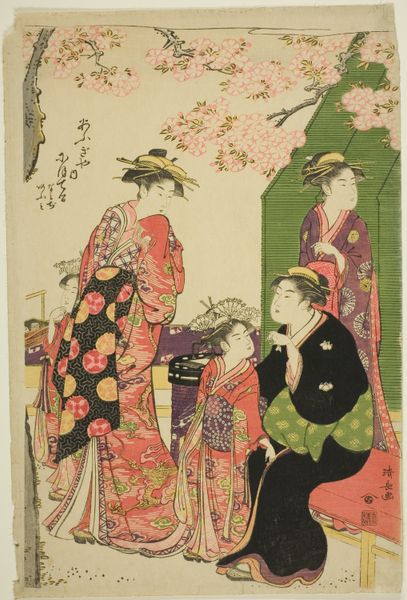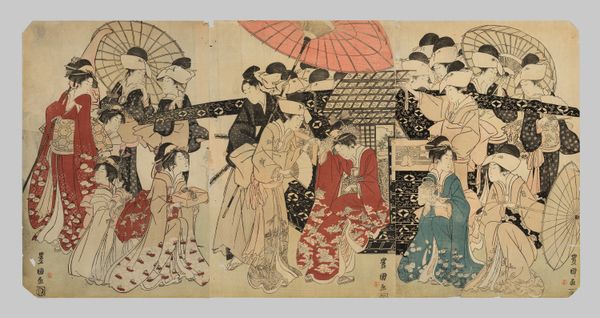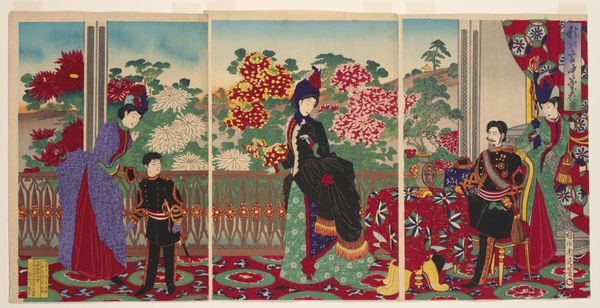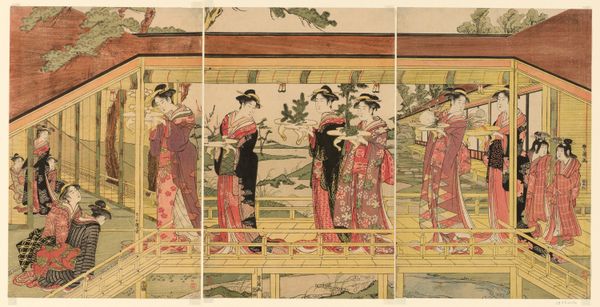
View of Benten Shrine on Nakanoshima Island in Shinobazu Pond, Ueno Park, from the series Famous Views of Tokyo (Tōkyō Tokyo meisho yori Ueno kōen Shinobazu no ike Nakanoshima Benten no kei) 1881
0:00
0:00
Dimensions: Image (each): 14 3/4 × 9 1/2 in. (37.5 × 24.1 cm) 14 3/4 × 29 1/8 in. (37.5 × 74 cm)
Copyright: Public Domain
Editor: This is "View of Benten Shrine on Nakanoshima Island in Shinobazu Pond, Ueno Park, from the series Famous Views of Tokyo" a woodblock print made by Utagawa Hiroshige III in 1881. There’s something almost dreamlike about this busy landscape filled with figures in traditional garments and European-style military uniforms. How would you interpret this scene? Curator: As a materialist, my initial impulse is to consider the socio-economic conditions of its creation. Woodblock prints like these weren't simply aesthetic objects; they were commodities produced within a complex system of labor, from the artist to the carvers to the printers. Consider how the rise of the merchant class and increasing urbanization in Tokyo impacted the demand and distribution of such prints. What materials were accessible? What techniques were privileged and why? Editor: So, you are seeing beyond the image itself, more into the way it was produced. Curator: Exactly. The woodblock print itself – its material reality – is a testament to a confluence of factors: available resources, the skill of artisans, and a market eager to consume images of modernizing Japan. Think about the juxtaposition of traditional Japanese clothing with western military garb. What does this tell us about Japan's engagement with global trade and power structures in the late 19th century? Editor: It makes me wonder about the role of the artisans in portraying this shift. Were they aware of participating in constructing a vision of this modernized Japan? Curator: Precisely! Their labor wasn't simply about replicating images; it involved negotiating the visual language of tradition and modernity, of local aesthetics and global influences. What materials did Hiroshige III have access to, and what were the means for producing such images on a wide scale for consumption? These are relevant considerations when examining not only what we are viewing, but why and how it came to be in the first place. Editor: This makes me see how the print embodies the historical moment of its creation and the many hands involved in its making. Thanks, that’s given me a new perspective! Curator: And examining this artwork from the standpoint of production and consumption has changed my perspective too.
Comments
No comments
Be the first to comment and join the conversation on the ultimate creative platform.
